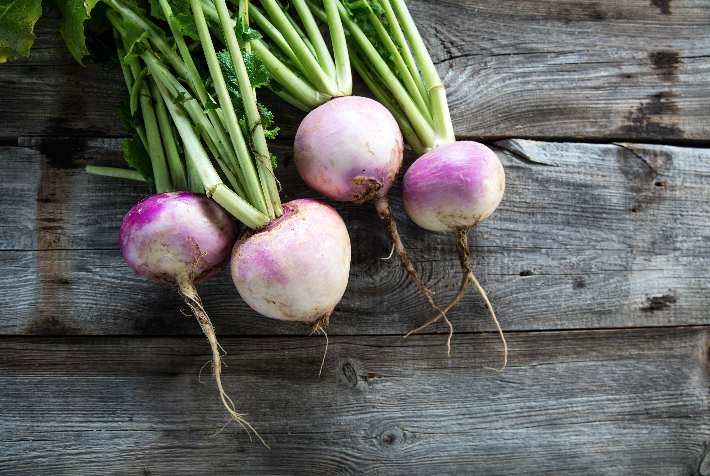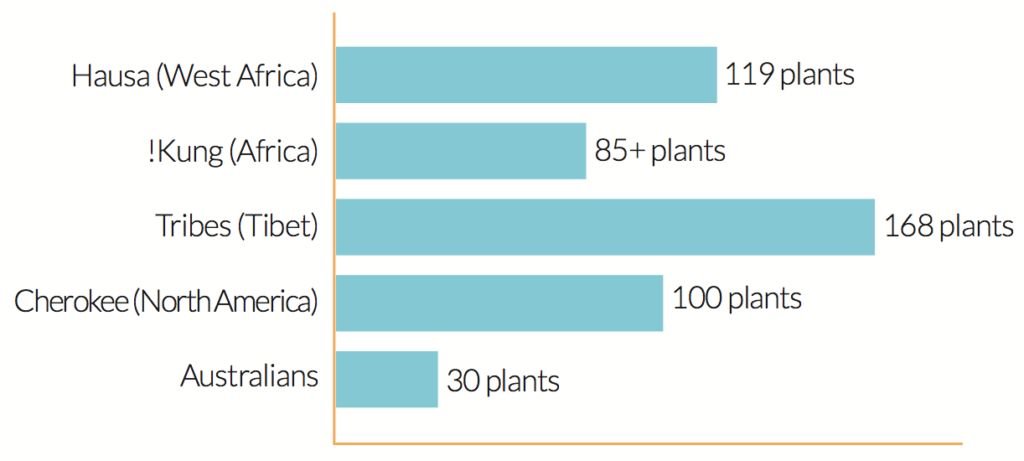Well, we’re finishing up our seasonal eating guide for Winter with another instalment of the world’s least sexiest vegetables. We’ve ticked off choko, beets and now we’re heading into turnip territory.

You might be wondering why you’d bother with these odd, old-fashioned edibles?
Well, if you want to support local farmers by eating a diet that’s in season (i.e. produced locally rather than hauled in from miles away) and you’d like to simultaneously enjoy a varied diet, without resorting to the exact same foods week in, week out, the simple fact is that there’s far less to choose from at this time of year in terms of fresh produce.
We’ll be hearing from local market gardeners Little Feet Gourmet next week, who’ll be sharing a guide to what’s in season here on the coast and what they’re currently growing.
But seriously, why turnip?
For someone who considers themselves a foodie, I might have lost all credibility trying to sell you on chokos a couple of weeks ago, but please, folks, give me a chance to build a case for turnips (and unfashionable veggies in general).
When I mentioned the idea of eating a varied diet – this wasn’t just saving you from falling into a culinary rut, although there’s merit in avoiding ruts too, of course. The current research is highlighting just how effective eating a diverse range of fresh produce is for maintaining health.
A bigger range of foods offer a broader spectrum of both nutrients and fibres (the latter being food for our beneficial gut bacteria) and this is essential for building gut health and immunity. The latest advice is to aim for 40 different plant foods every single week!
The real importance of diet diversity
With 30,000 edible plants currently on the world’s menu, we’re spoilt for choice, however many of us rely predominantly on the same 10-20. There’s been a radical decline in food diversity with just 50 crops now delivering 90% of the world’s calories. Only 50 years ago, several thousand plants would have done this!
100 years of agriculture looks like this:
• 75% of plant genetic diversity has been lost
• 30% of livestock breeds are at risk of extinction (6 breeds are lost each month!)
• 75% of the world’s food now comes from only 12 plants and 5 animal species
• Despite there being up to 30,000 edible plants species, only 150-200 of them are now used.
• Just 3 (rice, maize and wheat) contribute 60% of our plant calories.
It’s estimated that in a whole year, the average Australian will only eat around 30 species of plants. Bear in mind however, that many species we eat are cultivated from the same plant. Technically, broccoli, Brussels sprouts, cauliflower, cabbage, kale, collard greens and kohlrabi are actually all the same species – Bassica oleracea.
If we take a look at indigenous peoples who consume diets today that are more closely aligned to that of our paleolithic ancestors, we see a stark contrast.
And these figures above do not take into account the medicinal plants that were ingested, or the impressive diversity of animal foods. The !Kung for example, are known to consume 54 types of animals, far more than anything many of us can comprehend.
Getting out of your comfort zone and incorporating new foods – regardless of how fashionable they are – is one of the best health habits you can cultivate. I encourage people to purchase and experiment with one new locally grown food each season. If you’d like to take up the challenge – why not turnips?

Turnips: a nutrient dense vegetable
When you hear the term ‘new season’, it refers to produce at its very best in terms of freshness, flavour and nutrient content. Turnips, my friends, are now at their peak.
You can buy a bunch of locally grown, organic turnips online from Nurtured Earth – with the added benefit of the greens being included. Both the roots and the tops are edible and very nutritious – especially for our unique needs at this time of year, when our immune systems are taking a bit of a hit.
It might be surprising to learn that both the roots and greens are incredibly high in vitamin C. Your average turnip (including the root and greens) can supply your entire daily requirement! By consuming the whole turnip, you’re also getting a hefty dose of potassium, calcium, vitamin K1, folate, fibre and a range of powerful antioxidant and anti-inflammatory phytochemicals.
The lightly spicy greens are actually more nutrient dense than many of the other greens in the cruciferous family, even beating kale in many categories of nutrients.

How to use turnip
Upon purchasing a bunch of turnips, I like to store them in the fridge – either in a bag or the crisper draw to maintain their freshness. Aim to prepare and use the greens within a few days, but the roots will happily sit there for a couple of weeks if stored correctly.
Ways to use the root:
Hands down, the best way to enjoy turnip is to slice it into chips or cubes and roast it in plenty of olive oil and salt, or if you have some duck fat or lard on hand – even better! This method really brings out the natural sweetness and is the perfect way to try turnips if you’re new to them.
You can also experiment with a 50/50 blend of potato and turnip mash. Turnips are less starchy and much more nutrient dense than potatoes, so it’s a great way to take your mash to the next level, nutritionally. Prepare them in the exact same way as you would, the potatoes.
I adore baking gratin in Winter with whatever root vegetables I have on hand – turnips are delicious to add into the mix along with parsnip, sweet potato and potato. With a good mandolin, it becomes a quick and easy dish to make that keeps beautifully for lunches and snacks for several days.
Turnips can also be sliced, diced or grated raw into salads and coleslaw. They have a similar flavour and texture to both radish and cabbage so are suited perfectly to Winter salads. And whilst we don’t tend to crave raw salads at this time of year, they’re great to include as a side dish as they provide a big hit of enzymes which help us digest heavier meals.

How to use the greens:
The greens can be finely sliced and added into salads, soups, stews and frittata or in place of any other leafy green. Eaten raw, they’re much less spicy than mustard greens, with a relatively delicate flavour and when cooked, they’re even milder.
So, who’s with me on the turnip challenge? I’ve just ordered my first bunch from Nurtured Earth this week and plan to see if my young children will accept them as a substitute for baked potato chips. Garlic and onion powder is my secret weapon, just quietly.
Good luck, team!
Georgia is a clinically trained nutritionist, wholefoods chef, columnist and mum. She’s been featured in Body & Soul and had TV appearances on ABC Breakfast and Studio 10 for her unique approach to food and health. She’s known for reinventing traditional foods for the modern kitchen and was instrumental in a radical new approach to sports nutrition with a program for the NRL Parramatta Eels, kickstarting their ascent on the ladder in recent years. Find out more at stirringchange.com.





